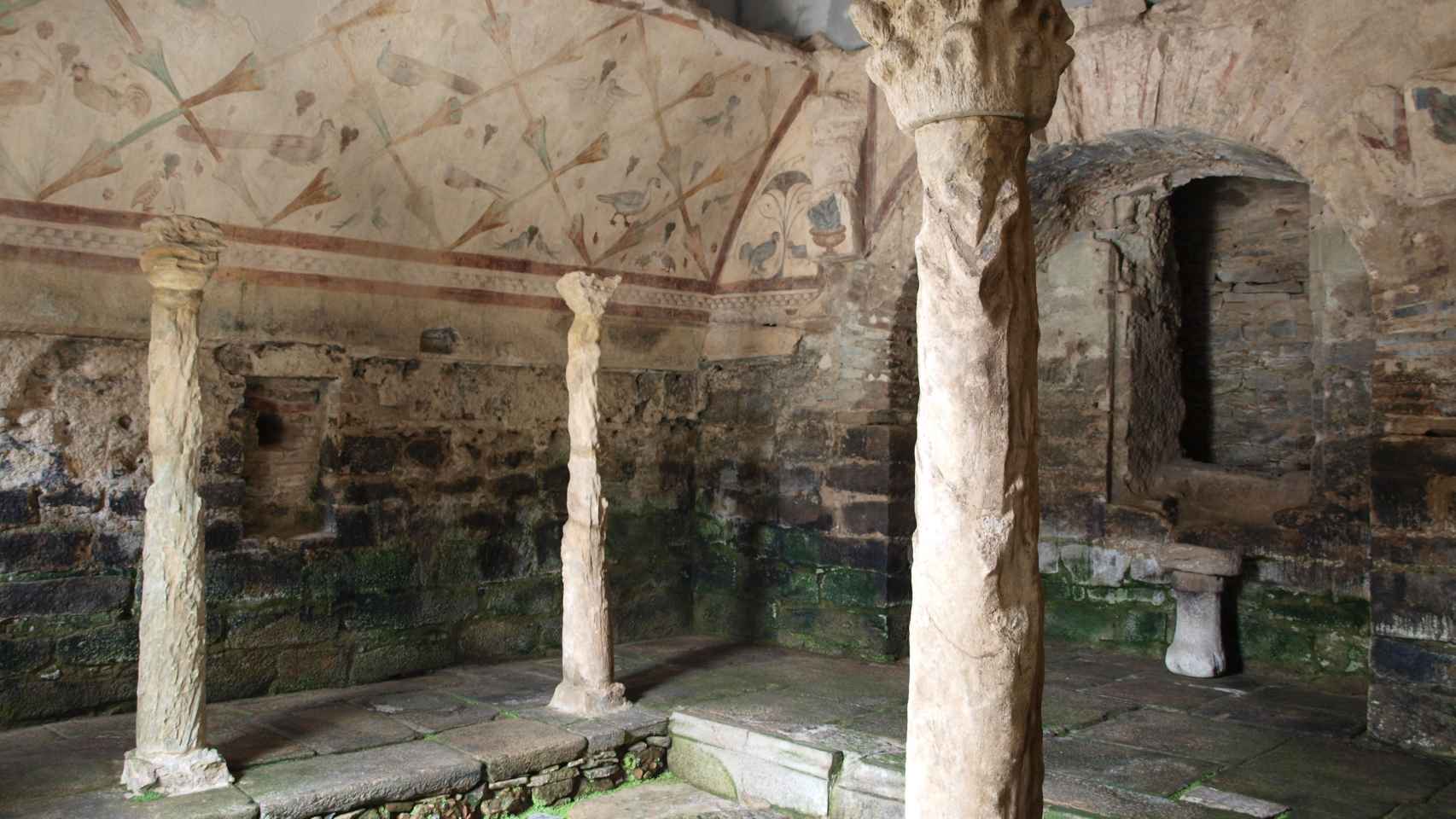Related news
An interdisciplinary team from the universities of A Coruña and Santiago de Compostela has managed to determine, through a combination of different archaeological, geological and geochronological methodologies, the main construction phases of the monument of Santa Eulalia de Bóveda, in Lugo, which demonstrate its relationship with the Middle Ages.
This building, according to USC in a statement, “one of the most unique and enigmatic in the northwest of the peninsula” —Declared a National Monument in 1931 and an Asset of Cultural Interest in 1996—, since the second decade of the 20th century, it has been the object of “all kinds of historical interpretations that tried to explain its uniqueness and origin.”
The most widespread hypothesis about its function is that it is a pagan temple from Roman times, later reconverted to Christian worship. From this association of Bóveda with a Roman religious space, its decorative elements have been interpreted, such as the interior frescoes or the reliefs at the entrance.
The new dates have made it possible to determine that the monument actually passed through three main phases. Thus, the foundation of the building visible today corresponds to the lower imperial Roman period (in the second half of the 4th century AD).
However, the dates obtained also reveal that the famous paintings of the vault of the underground classroom that supports the building are well post roman times. They were made in the 7th century, during the Germanic rule of Gallaecia. “They thus become the most outstanding sample of the scarce late-ancient and high-medieval Christian painting of the peninsular northwest and may even be a precedent of Asturian pre-Romanesque mural painting”, explained the university.
The dates also indicate that Santalla de Bóveda has an important stage of early medieval development: the vault on the upper floor was built, they say, between the 10th and 11th centuries, at a time of special economic and political development for the kingdom of Galicia.
Ceramic analysis
“From a historical point of view, the results of this research project open new unknowns around the construction and reconstruction of Santa Eulalia de Bóveda and its relationship with the power and religiosity of the first Galician Middle Ages, thus forcing rethink the origins of the building and its transformation “, has assured the entity.
Rebeca Blanco- Rotea, researcher at the Syncrisis Research Group of the University of Santiago and archaeological director of the project, which is funded by the Palarq Foundation, presented last week the conclusions of this interdisciplinary study, pioneer in Europe in its scope, at the Provincial Museum from Lugo.
Blanco-Rotea was accompanied by the vice-president of the Lugo Provincial Council, Maite Ferreiro Tallón; the manager of the Provincial Museum Network of Lugo, Encarna Lago; and the director of the Provincial Museum of Lugo, Aurelia Balseiro.
Among the tests carried out for the investigations, the USC has highlighted the analysis of the ceramic material of the walls, the OSL, a luminescence analysis technique that allows dating the aggregates without the need for organic matter; or the already known Carbon14.
Since its discovery in 1926, Santa Eulalia has been the subject of multiple interpretations and interventions, although researchers have never agreed on its assignment and functionality. It has been considered a Roman nymphaeum, a Visigothic church, and Asturian… And recently a Roman funerary monument. The most generalized proposal is that initially it was a temple of pagan worship to the waters (third century), which at the end of the IV would be Christianized, making the paintings and the separation into three naves. Since then it would be a Christian church, being cited in the 8th century in the doubtful testament of Odoario.
Follow the topics that interest you
Reference-www.elespanol.com
